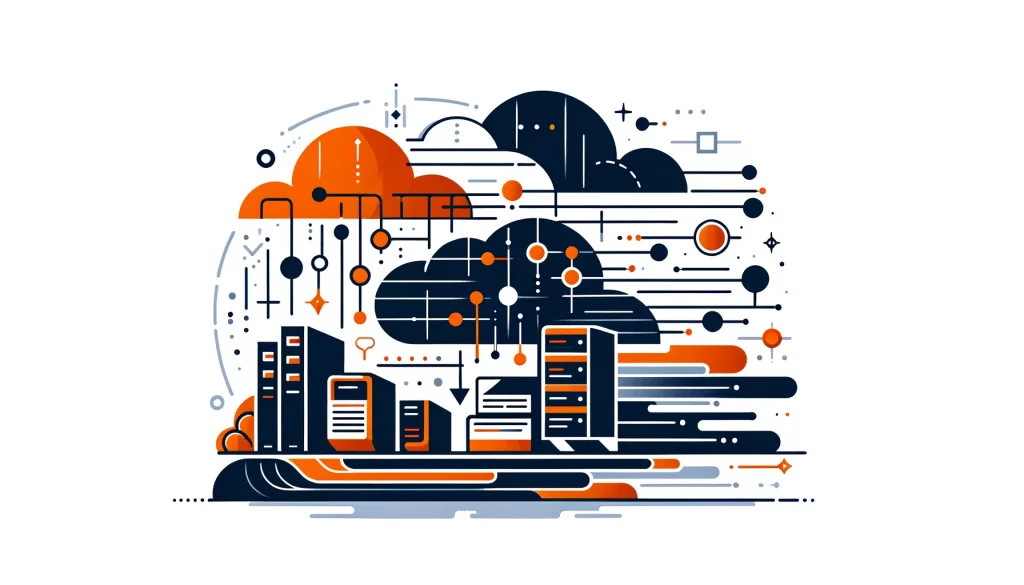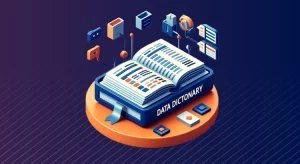
OLTP

Introduction to OLTP
In today’s business world, companies rely heavily on data to make informed decisions and improve their operations. Amid this landscape, a particularly vital resource has emerged – Online Transaction Processing. OLTP has firmly established itself as the foundation for modern business operations.
OLTP allows businesses to manage extensive transaction volumes immediately, maintaining data accuracy and supporting smooth business functions.
As businesses embrace digital transformation and migrate to operations, understanding the technologies needed to process big data is crucial. Having visibility and control over data is crucial for businesses, especially for audit trails. This is where OLTP plays a key role.
OLTP involves executing multiple concurrent operations, such as online banking, shopping, order entry, or text messaging. Record and secure these transactions, traditionally referred to as economic or financial transactions.
This allows companies to access the information at any time for accounting or reporting purposes. The meaning of “transaction” has changed with the internet.
The scope of Online Transaction Processing has expanded to encompass any digital interaction. This includes activities such as maintaining audit trails for data access and managing changes within the system.
The Significance of OLTP in Business
Today’s business environment highly values the significance of OLTP. Companies are collecting large amounts of data from websites, mobile apps, and IoT devices. This makes efficient data processing crucial.
OLTP systems provide the necessary infrastructure to handle this influx of data. They ensure quick and accurate processing of transactions, without compromising integrity or security.
Moreover, OLTP systems offer numerous benefits that can help businesses streamline their operations and gain a competitive edge. Real-time transaction processing helps companies respond quickly to customer needs and adjust to market changes.
OLTP systems utilize relational databases optimized for online transactions. These systems enable them to process large numbers of relatively straightforward transactions, such as insertions, updates, and cancellations.
They allow multiple users to access data simultaneously while maintaining resource integrity. OLTP systems can process data in real-time with fast response times. They use indexed data collections for quick searching and querying, and are always available with continuous backups.
The benefits extend far beyond the realm of processing and management. OLTP systems help businesses manage transactions efficiently. This leads to improved customer satisfaction, functional efficiency, and cost savings.
For instance, in the retail industry, these systems enable seamless online shopping experiences. They allow customers to browse products, place orders, and complete transactions quickly and securely.
Improving customer loyalty helps retailers better manage their inventory and supply chain, resulting in increased profits and growth.
OLTP systems are crucial in the financial sector for managing a high volume of financial transactions. These transactions include bank transfers, credit card payments, and stock trades. These systems ensure accurate and secure processing of transactions, minimizing the risk of errors or fraud.
Additionally, OLTP systems offer a detailed record of all financial transactions, helping financial institutions meet regulatory standards and uphold customer trust.
OLTP vs. OLAP
While OLTP focuses on processing, its counterpart, Online Analytical Processing (OLAP), emphasizes analyzing. OLAP databases analyze lots of data from different sources, like data warehouses or marts, quickly.
These platforms are perfect for extracting data, corporate intelligence, intricate computations, fiscal assessments, and predicting sales. OLAP databases create OLAP cubes that enhance traditional rows and columns in a relational database by adding extra dimensions.
The choice between the two depends on a company’s objectives. An OLAP database system provides a unified platform that helps businesses gain valuable insights from large datasets.
To handle daily transactions quickly and efficiently, you can use a database system based on OLTP. The system manages a large number of transactions every second.
However, many organizations are increasingly employing both systems.
They recognize that OLAP systems can evaluate data to improve business processes in OLTP systems.
Integrating with OLAP
Businesses are increasingly integrating OLTP and OLAP systems to enhance their management and analytics capabilities.
Companies can understand their operations better by combining the strengths of both systems. This can help them identify trends and patterns. With this information, they can make decisions that will lead to growth and revenue.
This integration also enables organizations to bridge the gap between functional and strategic decision-making. It ensures that we effectively translate insights gained from analyzing data into actionable improvements in business processes.
As data volume and complexity continue to grow, managing and processing this data becomes increasingly important. The significance of effective data management will only continue to rise. Businesses that invest in robust systems and integrate them with OLAP capabilities will be well-positioned to thrive.
Companies can streamline operations, improve customer experiences, and gain a competitive edge by utilizing its power.
The Future of OLTP
We expect rapid advancements in technologies to drive further innovation. These technologies include artificial intelligence, machine learning, and the Internet of Things (IoT). This is particularly true in the field of Online Transaction Processing.
As these technologies become more common, OLTP systems will need to adapt. They will have to handle the increasing complexity and amount of data generated by these sources. The systems will need to evolve and grow to keep up with the changes. This growth is necessary to ensure they can effectively process the data.
Businesses must stay current with the latest technology for online transactions. They should invest in the appropriate tools and knowledge to fully utilize these advancements.
The future looks bright, with numerous opportunities for businesses to leverage this technology to drive innovation and growth. The demand for robust OLTP and OLAP systems will continue to grow. More organizations drive this by adopting data-driven strategies and embracing digital transformation.
This presents a significant opportunity for technology providers and IT professionals specializing in Online Transaction Processing. They can develop and deliver cutting-edge solutions that cater to the changing needs of businesses across different industries.
OLTP and Data Privacy and Security
Moreover, the increasing emphasis on data privacy will further drive the adoption of OLTP systems. Cyber-attacks are increasing. What’s important is businesses need to make sure their data processing follows regulations like GDPR.
OLTP systems have security features, as well as audit trails. These features help organizations meet requirements. They also protect sensitive data from unauthorized access or data management.
OLTP and Cloud Computing
Another trend that is likely to shape the future of OLTP is the rise of cloud computing. As more businesses move their operations to the cloud, the demand for a cloud-based variation will increase.
Cloud-based OLTP systems offer several advantages that make them appealing to businesses of all sizes. These systems are scalable, flexible, and cost-effective.
Moreover, cloud-based solutions offer seamless integration with other cloud-based services, including analytics and machine learning platforms. This integration allows businesses to fully leverage their data’s potential.
Conclusion
In conclusion, OLTP is a crucial tool for businesses looking to thrive in the data-driven era. By processing a lot of transactions quickly, it helps businesses run smoothly and make smart decisions.
Organizations must use Online Transaction Processing to succeed in today’s competitive landscape. This is because they are dealing with big data complexities. Understanding and utilizing Online Transaction Processing is crucial for organizations to thrive in the current business environment.
Businesses can position themselves for long-term growth and success in the ever-evolving world of management and analytics. To do this, they need to combine OLTP with OLAP features, keep up with new technologies, and use cloud-based solutions.
Investing in OLTP technology today will position businesses to reap the benefits of an exciting future in the field.
If you’re interested in exploring database security and analytics, contact us for a demo session and discover how DataSunrise implements it.
